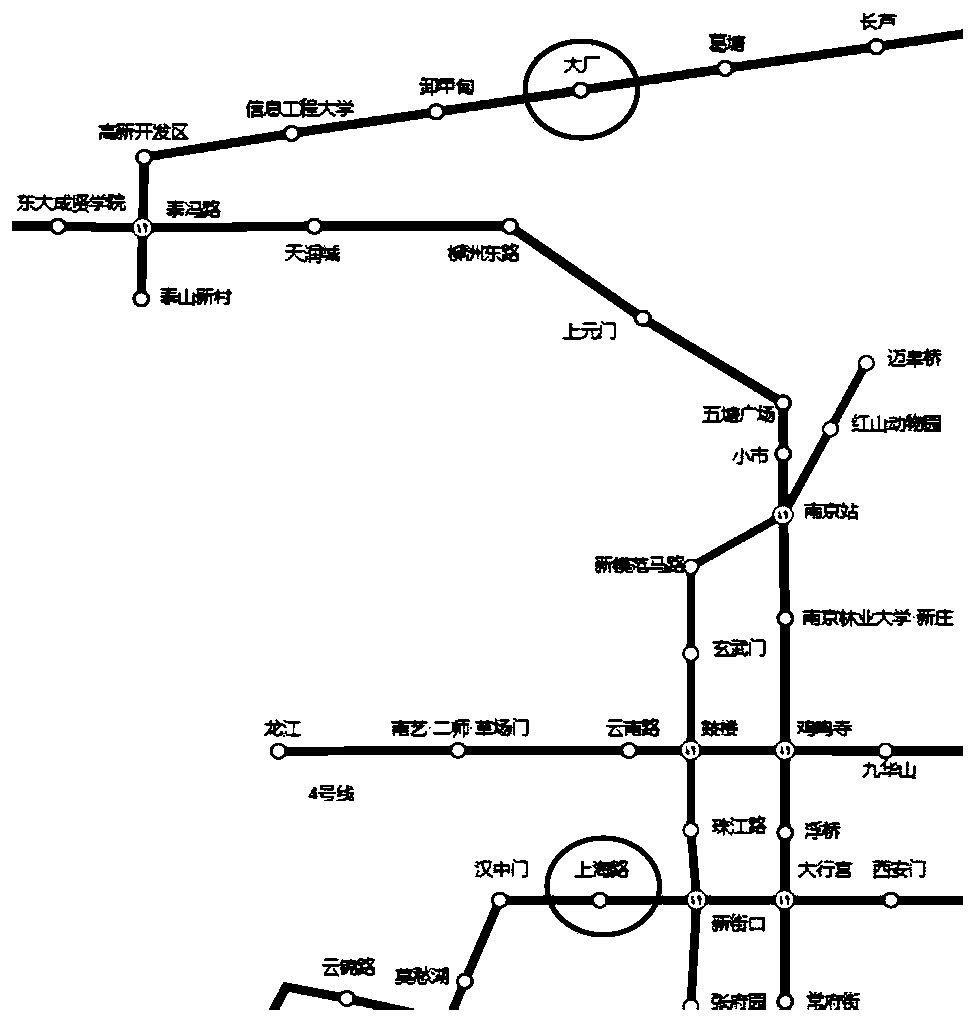Urban rail transit passenger travel time chain identification system
An urban rail transit and travel time technology, which is applied in the field of urban rail transit passenger travel time chain identification system, can solve the problems of high cost, low search efficiency, and inability to obtain a single passenger route selection.
- Summary
- Abstract
- Description
- Claims
- Application Information
AI Technical Summary
Problems solved by technology
Method used
Image
Examples
specific Embodiment 1
[0104] The invention provides a rail transit passenger travel time chain identification system, which is composed of three modules, a road network topology structure building module, an effective path search module and a passenger travel time chain identification module. The system operation process is as follows figure 2 shown
[0105] First, the rail transit road network is constructed by the road network topology structure building module. The rail transit road network topology is expressed as G={L(s)}, where G represents the constructed rail transit road network, and L represents the rail transit road network. 's line. in:
[0106] L={l 1 , l 2 ,...,l m}, m is the number of lines included in the road network.
[0107] l i ={s i1 , s i2 ,...,s in}, n is the number of stations on line i, s in Indicates line l i on the nth station.
[0108] station in It also includes 4 attributes: station name, line number, station number, and whether it is a transfer station....
PUM
 Login to View More
Login to View More Abstract
Description
Claims
Application Information
 Login to View More
Login to View More - R&D
- Intellectual Property
- Life Sciences
- Materials
- Tech Scout
- Unparalleled Data Quality
- Higher Quality Content
- 60% Fewer Hallucinations
Browse by: Latest US Patents, China's latest patents, Technical Efficacy Thesaurus, Application Domain, Technology Topic, Popular Technical Reports.
© 2025 PatSnap. All rights reserved.Legal|Privacy policy|Modern Slavery Act Transparency Statement|Sitemap|About US| Contact US: help@patsnap.com



